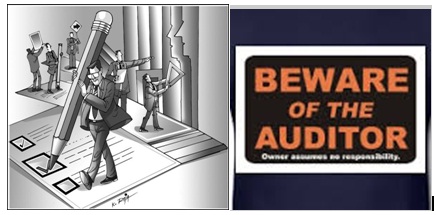Reference no: EM132373384 , Length: word count : 2500
ASSIGNMENT
Your work will generally be assessed in terms of the following criteria:
1. Effectiveness of communication - i.e. readability, legibility, grammar, spelling, neatness, completeness and presentation will be a minimum threshold requirement for all written work submitted for assessment. Work that is illegible or incomprehensible and does not meet the minimum requirement will be awarded a fail grade.
2. Demonstrated understanding - This will be evidenced by the student's ability to be dialectical in the discussion of contentious issues.
3. Evidence of research - This will be evidenced by the references made to the statutes, auditing standards, books, journal articles and inclusion of a bibliography.
Question 1.
Explain and discuss the following.
1. Industry 4.0
2. EU General Data Protection Regulation (EU-GDPR)
3. The VUCA world- The new level playing field
4. NOCLAR
Question 2.
Explain and discuss
1. When do auditors need to highlight risk by issuing a "going concern" emphasis of matter in their report?
2. How can auditors cultivate an appropriate level of scepticism in order to do their jobs properly?
Question 3.
"Doctor, Doctor. Every time I go on an audit I get covered in rashes. What could it be?""Mmmm. Let me take a look. Aaah. As I suspected. Ticks."

Beware of the auditor - they only tick boxes. Discuss
Question 4.
1. Discussten (10) of the following which could impact on an auditor's work and how they impact on the auditor's capacity to make decisions
Anchoring / Anthropic Bias / Attributional Bias / Availability Bias / Barnum Effect / Base Rate Neglect / Behavioural Confirmation / Belief Perseverance / Bias Blind Spot / Clustering Illusion / Confirmation Bias / Conjunction Fallacy / Contrast Effect / / Cultural Bias / Dilution Effect / Disconfirmation Bias / Egocentric Bias / Endowment Effect / Experimenter's Regress / False Consensus Effect / Framing Effect / Fundamental Attribution Error / Gambler's Fallacy / Group Serving Bias / Group Attribution Error / Halo Effect / Hindsight Bias / Hostile Media Effect / Hyperbolic Discounting / Illusion of Control / Illusion of Validity / Illusory Correlation / Impact Bias / Infrastructure Bias / In Group Bias / Just World Phenomenon / Kuleshove Effect / Lake Wobegon Effect / Logical Fallacy / Loss Aversion / Media Bias / Memory Bias / Mere Exposure Effect / Misinformation Effect / Negativity Effect / Notational Bias / Out Group Homogeneity Effect / Overconfidence Bias / Pathetic Fallacy / Peak End Rule / Physical Attractiveness Stereotype / Planning Fallacy / Picture Superiority Effect / Positivity Effect / Preference Reversal / Primacy Effect /Priming / Projection Bias / Pseudo Certainty Effect / Pseudo Effect / Publication Bias / Recency Effect / Regression Fallacy / Reporting Bias / Risk Aversion / Rosy Retrospection / Sample Bia / Selection Bias / Selective Perception / Self Deception / Self Serving Bias / Spacing Effect / Statistical Bias / Status Quo Bias / Sunk Cost Effects / Tunnel Vision / Trait Ascription Bias / Valence Effect
2. If the above biological and cognitive biases don't disrupt the auditors capacity to make decisions, list and explain at least four organisational constraints that will also impact on the auditors decision making.